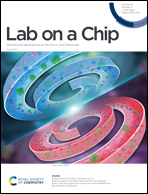Engineering cell–substrate interactions on porous membranes for microphysiological systems
Abstract
Microphysiological systems are now widely used to recapitulate physiological and pathological microenvironments in order to study and understand a variety of cellular processes as well as drug delivery and stem cell differentiation. Central to many of these systems are porous membranes that enable tissue barrier formation as well as compartmentalization while still facilitating small molecule diffusion, cellular transmigration and cell–cell communication. The role or impact of porous membranes on the cells cultured upon them has not been widely studied or reviewed. Although many chemical and physical substrate characteristics have been shown to be effective in controlling and directing cellular behavior, the influence of pore characteristics and the ability to engineer porous membranes to influence these responses is not fully understood. In this mini-review, we show that many studies point to a multiphasic cell–substrate response, where increasing pore sizes and pore–pore spacing generally leads to improved cell–substrate interactions. However, the smallest pores in the nano-scale sometimes promote the strongest cell–substrate interactions, while the very largest micron-scale pores hinder cell–substrate interactions. This synopsis provides an insight into the importance of membrane pores in controlling cellular responses, and may help with the design and utilization of porous membranes for induction of desired cell processes in the development of biomimetic platforms.



 Please wait while we load your content...
Please wait while we load your content...